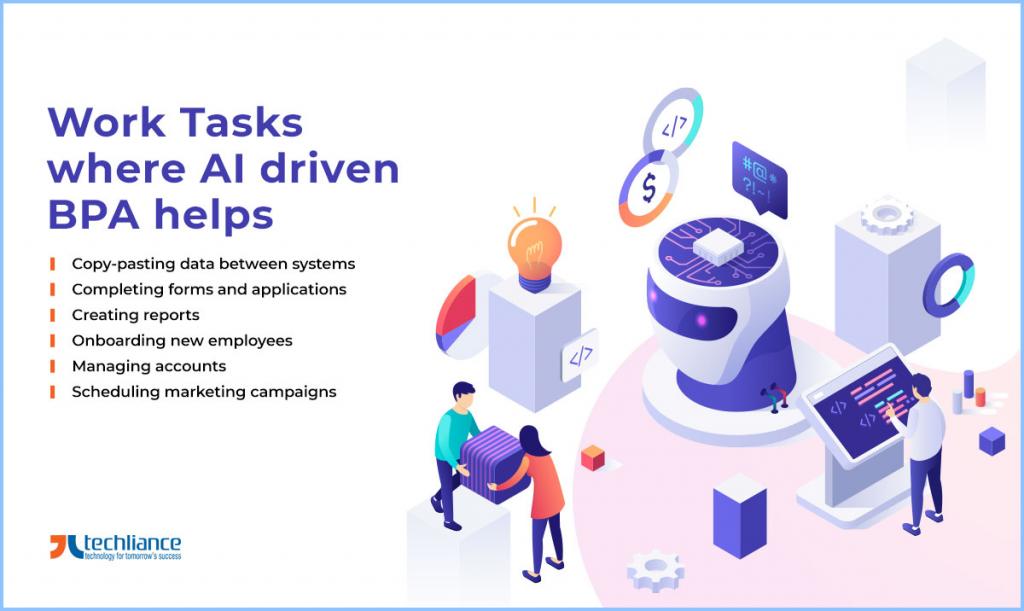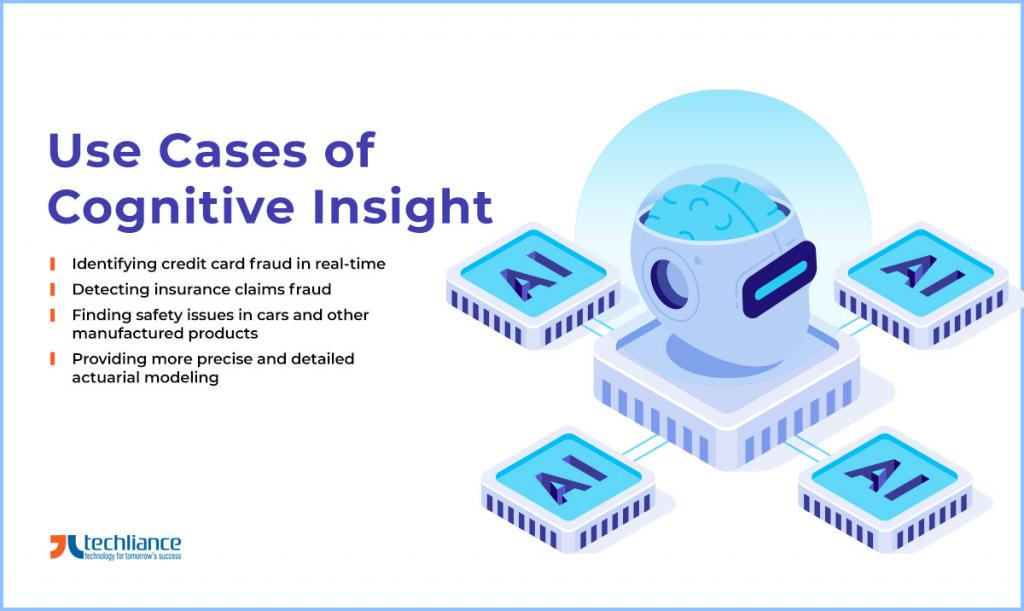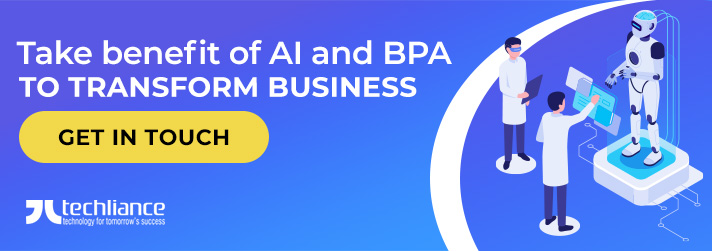Nowadays, it is no brainer that AI and business process automation have bright future. Because, happy and productive employees are the most valuable asset of every company in 2024 and coming years. Therefore, all startups and companies worldwide invest in empowering employees, as they play role in business progress.
Keep your workforce more engaged and efficient for better output. You should save them from an avalanche of mind-numbing and boring tasks that they have to complete on daily basis.
Remember the productivity mantra by Allen Morgenstern that has become common internationally.
Work smarter, not harder.
Allen F. Morgenstern
So, you want your company to grow and thrive amid 2024 and future. Then keep in mind that BPA is the path to traverse.
This advanced business strategy is additionally powered by AI. Hence, it is important to discuss why the two share a bright future.
A qualified 360° IT Services company can support enterprises and startups in automating the business processes. Consequently, they can operate their business smartly and concentrate on achieving more progress.

Why choose Business Process Automation?
BPA is a set of technologies and tools capable of automating repetitive day-to-day low-key tasks.
It allows employees to focus on creative, higher-level and productive work that matters.
This is a problem solver, as 90% of employees say they’re busy with tedious, repetitive work that can be automated.
BPA aids you in saving a lot of time, decreasing costs, and eliminating human mistakes.
Hence, adopting business process automation (BPA) is something that you should give serious consideration during 2024 and future.
Work Tasks where AI driven BPA helps
AI enabled BPA is especially great for the use cases like the following.
- Copy-pasting data between systems
- Completing forms and applications
- Creating reports
- Onboarding new employees
- Managing accounts
- Scheduling marketing campaigns
Nonetheless, what we’re talking about here is performing complex rule-based tasks without any human intervention. This means that business process automation works seamlessly only when it’s pre-programmed and predefined.
In other words, if something in the automation process changes, a BPA system will not adjust to the new circumstances. and that will result in various errors. That’s where AI and ML come in to transform traditional automation solutions and make them capable of learning new things and adapting to changes.
And that’s how cognitive automation was born, and it’s bound to transform the concept of business as we know it.

Business Needs that AI can Fulfill
Finally, it’s important to say that there are three business requirements that AI can achieve amid 2024.

Now, let’s explore these aspects deeply.
Process Automation
There are different digital and physical tasks that can be intelligently automated.
Robotic process automation (RPA) is one of the most frequently used technologies globally. Unlike earlier tools that were only used for back-office, administrative, and financial tasks, modern applications feature some advanced capabilities.
For example, there are RPA tools enriched with computer vision, meaning that they can see the screen. This capability can be used for image and facial recognition or interpreting MRI and X-ray scans.
Others can read, understand, and interpret the text and unstructured data with the help of natural language processing and optical character recognition. That’s why these tools can be used to extract relevant information from contracts and other legal documents automatically.
An employee trying to copy the data from hundreds or thousands of invoices into a database will have a hard time completing this monotonous task. Also, not to mention that they’re bound to make a number of errors.
On the other hand, RPA, can scan a 100-page document within seconds and generate the output equally quickly. Thanks to all this, potential savings companies that implement RPA are expected to experience by 2025 will amount to somewhere between $5 trillion and $7 trillion.
Gaining Cognitive Insight
Cognitive insight refers to technology stacks more advanced than RPA in the sense that they’re capable of solving problems that require human intelligence.
Powered by big data analytics and machine learning, cognitive insights leverage massive amounts of data, identify patterns in them, and interpret their meaning in order to make different data-driven predictions.
Given that people produce 2.5 quintillions of data every day, it’s obvious that companies have to filter out what’s relevant and what’s useless if they want to improve their business processes.
Cognitive insight tools are used in a range of different industries, including sales, marketing, medicine, finance, and automotive, to name just a few.
One of the most popular use cases is predicting customer behavior. These algorithms have become increasingly sophisticated, to such an extent that they can predict what a particular customer will purchase.
Medical research is another field that can greatly benefit from this technology. Namely, researchers can read about 20 scientific papers a month, but in order to accelerate the entire process, they would have to increase their workload significantly.
If we bear in mind that the body of scientific material keeps on growing, it’s obvious that they can’t keep up. A cognitive insight system can be used for this purpose to “read” and analyze the data, unlock patterns, and validate theories at a significantly greater speed.
Other use cases of cognitive insight include:
- Identifying credit card fraud in real-time
- Detecting insurance claims fraud
- Finding safety issues in cars and other manufactured products
- Providing more precise and detailed actuarial modeling
Big data analytics used for predicting business outcomes and identifying threats and risks has already become a mainstream practice, but there’s much room for improvement. In the future, we can expect the combination of machine learning and streaming analytics to take real-time big data processing, reporting, and controlling to the next level.
In other words, this will mean a reliable cybersecurity solution capable of noticing unusual behavior, alerting the system, and taking the right measures automatically, without the need for human intervention. This is something that will eliminate one of the biggest barriers to the Internet of Things implementation.

Cognitive Engagement
The purpose of these advanced BPA tools, enabled by AI and natural language processing, is to engage customers and employees in meaningful conversations.
Companies can significantly improve customer experience using intelligent chatbots that offer 24/7 support. This solves wide range of customer queries and issues starting from password retrieval requests to complex, technical questions.
These AI-powered algorithms can do much more than providing predefined, scripted answers, as they’re capable of collecting customer data, analyzing it, and personalizing further communication. Automating customer onboarding is another important use case of this technology, as these AI assistants deliver an exceptional customer experience and boost retention.
Namely, new customers can learn how to make the most of a product or service in their own time and at their own pace, as chatbots can operate outside regular business hours and don’t need appointment scheduling in advance.
Similarly, employee onboarding plays an important role in having an educated staff that knows how to do their job. Implementing cognitive engagement agents for this purpose can speed up this process and make it more efficient but not at the expense of quality.
Other implementations of cognitive technology include systems for product and service recommendations that provide a personalized user experience to returning customers by showing them the items they might be interested in based on their previous behavior and purchases.
Similarly, the healthcare industry can improve user experience with the help of treatment recommendation systems that create personalized plans based on individual patients’ health conditions and previous treatment.

In Conclusion
Artificial intelligence and business process automation have created a synergy that revolutionize business processes. So, they jointly boost employee efficiency and minimize operational costs.
Intelligent automation eliminates the need for manual labor and paperwork while generating new positions and business opportunities. But we have only scratched the surface when it comes to the potential of these advanced technologies. The future will bring many new and sophisticated use cases and implementations of AI and BPA.
Take advantage of AI and BPA to transform your business, and retain users’ interest intact during 2024 onwards. Discuss with Techliance about modernizing your business operations.




